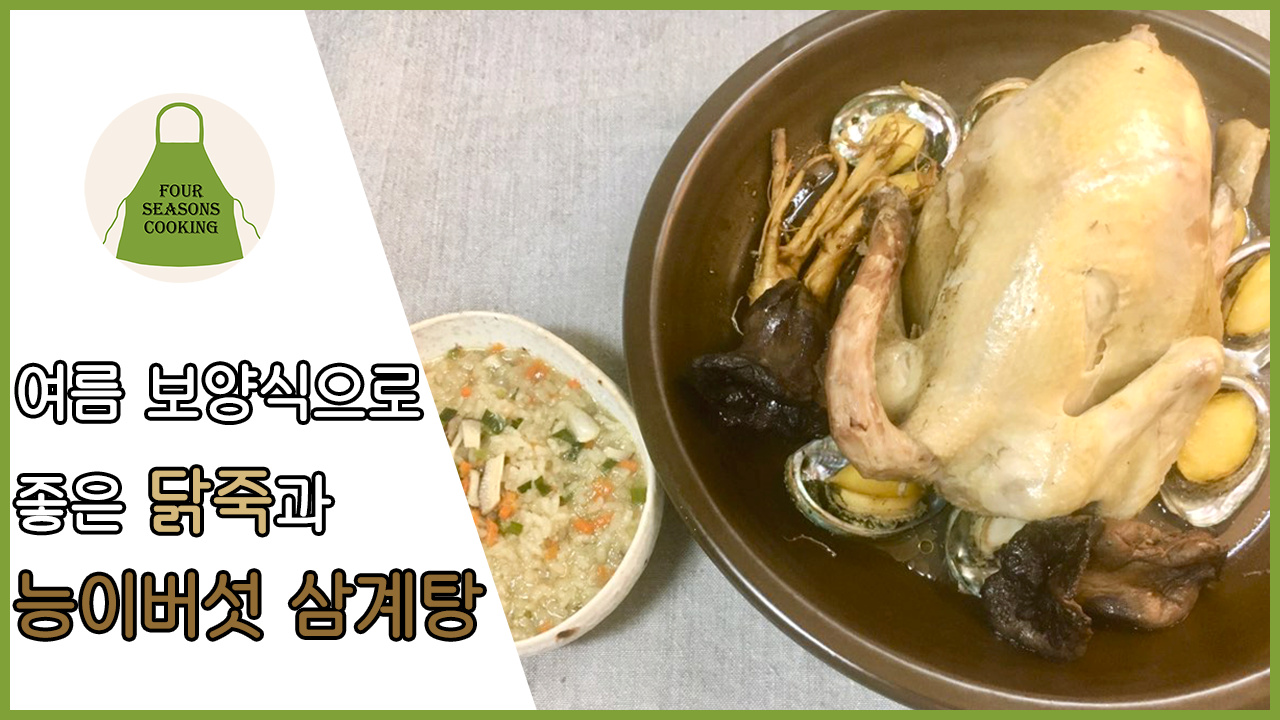Samgyetang with Matsutake Mushrooms: The Ultimate Summer Revitalizer
Combat the summer heat with this nourishing Samgyetang recipe, featuring the earthy aroma of Matsutake mushrooms and a rich broth to restore your energy. Perfect for a special 복날 (Boknal) feast!

Ahead of the first day of summer heat (Chobok), I prepared this special Samgyetang with Matsutake mushrooms. The fragrant mushrooms, chewy abalone, and tender chicken combine to create the ultimate restorative dish, perfect for reviving your energy after a draining hot spell. Enjoy this impressive meal at home.
Samgyetang Ingredients- 1 whole Korean native chicken, thoroughly cleaned
- 7-8 small abalones, fresh
- 2 roots of ginseng
- 2 pieces of frozen Matsutake mushrooms
- 5-6 whole garlic cloves
- 5 jujubes (red dates)
Nutritious Dakjuk (Chicken Porridge) Ingredients- 1 cup glutinous rice
- 100g carrots
- 3 stalks of green onions
- 1 shiitake mushroom
- Salt to taste
- 1 cup glutinous rice
- 100g carrots
- 3 stalks of green onions
- 1 shiitake mushroom
- Salt to taste
Cooking Instructions
Step 1
First, trim the fatty bits from the inside of the chicken’s rear and the neck area. Rinse the chicken thoroughly inside and out under running water. If there are any remaining pinfeathers, carefully remove them by hand or with tweezers for a cleaner presentation.

Step 2
Soak the frozen Matsutake mushrooms in lukewarm water until fully thawed, then rinse them clean under running water. Gently scrub the ginseng roots with a soft brush to remove any dirt. Matsutake mushrooms are in season in September, but frozen ones still offer a wonderful aroma. Even a small amount imparts a strong, distinct fragrance.

Step 3
Place the ginseng, jujubes, and other herbal ingredients, along with the whole garlic cloves, into a cheesecloth bag or a mesh broth bag. Tie it securely to prevent the ingredients from dispersing into the soup during cooking. This ensures a clear, rich broth and prevents the herbs from becoming messy.

Step 4
In a sturdy pot, combine the herbal sachet, the cleaned chicken, Matsutake mushrooms, and ginseng. Bring to a boil and simmer until the chicken is tender. This typically takes about 50 minutes in a regular pot or 20 minutes in a pressure cooker. (Pro tip: Adding 2 bay leaves during cooking can further help eliminate any gamey odors.)

Step 5
While the chicken is cooking, scrub the small abalones clean with a toothbrush. Carefully remove the hard ‘teeth’ or beak of the abalone with a knife. Leaving these in can result in an unpleasant gritty texture when eaten, similar to chewing on sand.

Step 6
After about 40 minutes of simmering, when the chicken is nearly cooked, add the prepared abalone to the pot. Continue to cook for another 10 minutes. This ensures the chicken becomes tender while the abalone remains pleasantly chewy. Simmering for a total of 50 minutes helps tenderize the native Korean chicken, which can sometimes be a bit tougher.

Step 7
For the Dakjuk (chicken porridge), finely chop the carrots and green onions after washing them. Feel free to use any leftover vegetables you have in your refrigerator, such as zucchini or onions, to enhance the nutritional value and flavor of the porridge.

Step 8
Finely chop the shiitake mushrooms as well. These will add a wonderful umami depth to the porridge.

Step 9
Strain the chicken broth from the Samgyetang, skimming off any excess fat. In a separate pot, bring 1 cup of glutinous rice to a boil. Once the rice begins to soften, add the chopped carrots, shiitake mushrooms, and green onions. Stir continuously to prevent the porridge from sticking to the bottom of the pot as it thickens.

Step 10
Once the porridge has reached your desired consistency, season it with salt to your taste. Your hearty and nourishing Dakjuk is now ready to be served alongside the Samgyetang for a complete and satisfying meal.



